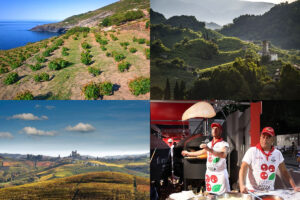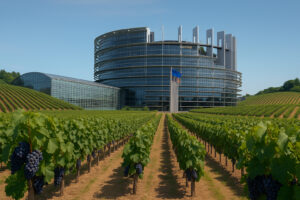For a country like Italy, where terms like programming and strategy seem to pertain to an imaginary vocabulary, it could be important for it to look at other countries that are managing to create new models to confront the economic situation. This is important for the Italian wine sector, especially if it means looking at a model from one of the country’s main competitors, France.
By taking a quick overview at the French wine sector, it is clear that the country is moving towards a comprehensive restructuring of its viticultural patrimony. Production is gradually being reduced; the importance given to quality wines (AOC) is increasing while that for table wines is decreasing. Vineyard land is also declining. This signifies that France is following a coherent and unified strategy for the wine sector while Italy is still using only provisory revisions.
As for the numbers, in 2008 France produced 42.6 million hectoliters of wine, of which 21.4 million were AOC certified, versus 46.8 million produced in 2007. This total also includes wine that is destined for distillation to produce Cognac and Armagnac (9.6 million hectoliters). This, evidently, explains Italy’s surpassing France in production in recent years – once a point for boasting, it now seems that it may have just been bad planning by Italian winemakers.
Since 2004, in fact, France has made decisive cuts in table wine production (falling from 21.1 million to 14.3 million) as well as extirpating vineyards (falling from 480,000 hectares to 470,000 in 2008). 10,000 hectares of VQPRD have been grubbed up, as well as 30,000 for other wines, resulting in an average of 70 quintals produced per hectare throughout France.
In conclusion, France has re-sized its winemaking industry, moving in the right direction in regards to the current economic situation by giving priority to its quality wines. In Italy, on the other hand (according to ISTAT/ISMEA data), the contrary seems to be true.
Copyright © 2000/2025
Contatti: info@winenews.it
Seguici anche su Twitter: @WineNewsIt
Seguici anche su Facebook: @winenewsit
Questo articolo è tratto dall'archivio di WineNews - Tutti i diritti riservati - Copyright © 2000/2025








































































































































































































